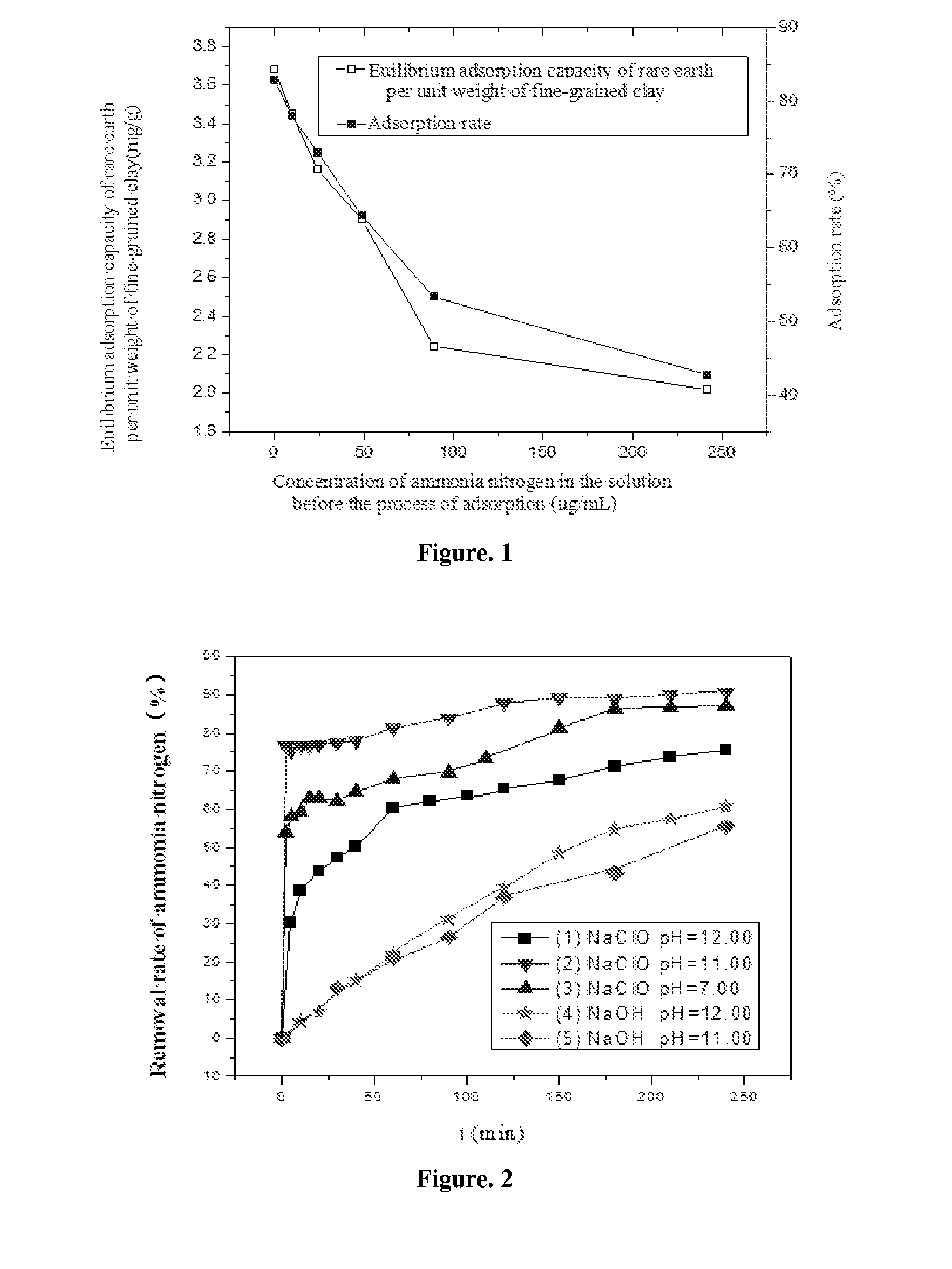Method for treating solution containing rare earth
- Summary
- Abstract
- Description
- Claims
- Application Information
AI Technical Summary
Benefits of technology
Problems solved by technology
Method used
Image
Examples
preparation example 1
[0053]The preparation example is used for illustrating a method for preparing the fine-grained clay provided in the present invention.
[0054]A 1,000 g of dump leaching tailings (main ingredients are mica, kaoline and potassium feldspar, the same below) from Anyuan County in Jiangxi Province are sieved at 25° C. by a griddle with 100 mesh (150 μm, the same below), and the fine-grained clay with a grain diameter ranging 19-150 μm are sifted out. Take 100 g of the fine-grained clay, and vibrate and soak with 500 ml neutral sodium chloride aqueous solution having a concentration of 1.2 mol / L for 30 minutes, and then filter. The obtained solid phase product is washed with pure water, subsequently the washed product is dried at a temperature of 50° C., thereby obtain the Na+ type fine-grained clay XN-1.
preparation example 2
[0055]The preparation example is used for illustrating a method for preparing the fine-grained clay provided in the present invention.
[0056]A 1,000 g of dump leaching tailings from Anyuan County in Jiangxi Province are sieved at 25° C. by a griddle with 100 mesh, and the fine-grained clay with a grain diameter ranging 19-150 μm are sifted out Take 100 g of the fine-grained clay, and vibrate and soak with 500 ml acidic sodium chloride aqueous solution having a concentration of 1.2 mol / l, and a pH value of 2 for 30 minutes, and then filter. The obtained solid phase product is washed with pure water, subsequently the washed product is dried at a temperature of 50° C., thereby obtain the Na+—H+ type fine-grained clay XN-2.
preparation example 3
[0057]The preparation example is used for illustrating a method for preparing the fine-grained clay provided in the present invention.
[0058]A 1,000 g of dump leaching tailings from Anyuan County in Jiangxi Province are vibrated and soaked at 25° C. with 5,000 ml pure water for 30 minutes, and the soaked product is sieved by a griddle with 100 mesh, and the fine-grained clay with a grain diameter ranging 19-150 μm are sifted out, and then the sifted clay is washed with pure water, and the washed product is subsequently dried at a temperature of 50° C. thereby obtain the fine-grained clay XN-3.
[0059]Take 10 g of the fine-grained clay XN-3, and vibrate and soak with 50 ml sulfuric acid solution having a pH value of 2.0 for 30 minutes, and then filter. The obtained solid phase product is washed with pure water, subsequently the washed product is dried at a temperature of 50° C., thereby obtain the H+ type fine-grained clay XN-4.
PUM
| Property | Measurement | Unit |
|---|---|---|
| Temperature | aaaaa | aaaaa |
| Length | aaaaa | aaaaa |
| Length | aaaaa | aaaaa |
Abstract
Description
Claims
Application Information
 Login to View More
Login to View More - R&D
- Intellectual Property
- Life Sciences
- Materials
- Tech Scout
- Unparalleled Data Quality
- Higher Quality Content
- 60% Fewer Hallucinations
Browse by: Latest US Patents, China's latest patents, Technical Efficacy Thesaurus, Application Domain, Technology Topic, Popular Technical Reports.
© 2025 PatSnap. All rights reserved.Legal|Privacy policy|Modern Slavery Act Transparency Statement|Sitemap|About US| Contact US: help@patsnap.com


